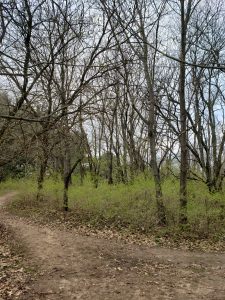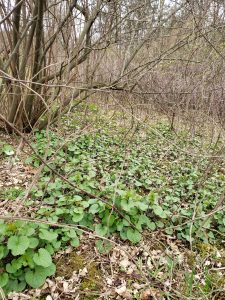Help the Earth - Remove Invasive Plants
What better way to help our planet and celebrate the 50th anniversary of Earth Day on April 22, then to help our native plant species in a fight against non-native, invasive plants. It’s a perfect time of year to do it, too!
Here are a few examples and how to do your part in getting rid of them.




Autumn Olive – Elaeagnus umbellata
These fast growing shrubs or small trees are common in highway medians and forest edges. They are very easy to spot right now, with their spotted, silvery-bottomed leaves and speckled branches. If allowed to grow into fruit-bearing stage, each plant can produce up to 200,000 seeds. The fruit is preferred by wildlife and the seeds are dispersed through fecal droppings. Not only does the Autumn olive grow quickly, taking up space and resources from native plants, it has nitrogen-fixing root nodules that allow it to thrive in poor soil situations….meaning it can grow almost anywhere.
Removal Tips:
The best way to get rid of Autumn Olive is to remove the plant completely….roots and all. If this is not possible, cutting the trunk and spraying with an herbicide is the next best method of removal. If an herbicide is not used on the stump, prolific resprouting will occur making the plant harder to remove later and increasing the number of trunks to be delt with. Both above and underground parts need to be killed in order to successfully remove this invasive plant. *always follow proper application and safety procedures when using chemicals




If allowed to grow, here are photos of what an invasion of these plants might look like...

Bush honeysuckle

Garlic mustard
As you go for a walk in your neighborhood, park or yard, keep your eyes open and on guard for these invaders …. they are easy to spot right now.
Here are a few resources to help you with identification, removal and general invasive species information.



